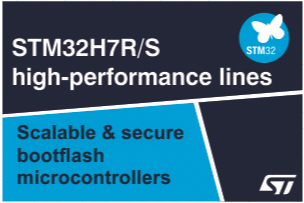
By Dr.SS Verma, Professor, Department of Physics, SLIET
Earthquakes are one of the most devastating natural calamities for mankind on mother earth which still needs the accurate, reliable and cost effective scientific and technological solution not only for their prediction but also for damage control. Earthquake prediction has always been a hot topic for mankind. Everybody knows that earthquakes happen, but where and how they will occur some next day remains the million dollar question. With growing urbanization of our planet chances improve that one day an important city is hit, destroying its infrastructure and killing several hundreds of people, displacing multiples more. With industrialization and urbanization, the earthquakes are becoming much more violent, the frequency and intensity of the quakes are increasing, the death tolls are rising, property damage is mounting and the impact on the world’s already unstable economy is being pushed to unmanageable limits.
Electronic seismography
Electronic has come to a great help through communication networking after any earthquake and it is envisaged that in near future of electronic governed era, electronics will be an important tool not only for earthquake inflicted damage control but also for accurate, reliable and cost effective earthquake prediction. Even today, we can be thankful for the help from advanced electronic devices from Seismometers to satellite based detection that make a real difference in earthquake management. Once the earthquake has struck, and the search and rescue begins, it is electronic technology that helps detect people trapped in collapsed buildings and enables communications. Use of electronics in various earthquake prediction technologies like satellites, GPS, electromagnetic radiations (radio waves & near-infra-red radiation), stress and spontaneous plasma-related atmospheric light phenomena is inevitable. Use of modern space-based remote sensing, spatial science and information technologies is being integrated into environmental and tectonic studies for the evaluation of earthquake and inundation risks as well as new mitigation strategies.
Radio amateurs, electronic engineers as well as physicists know about sudden peaks in the propagation of radio signals. Countries are already applying radio-triangulation networks to determine the sources of these spurious signals. From this we know that very long radio waves occur prior to earthquakes. In these countries several scientist work together with industries to refine this method and with success. Reported infra-red radiation near 650 nm also appears to be an ‘extra’. It isn’t a priori thermal (heat) radiation, but invisible red light. Its appearance was discovered on remote sensing satellite images prior to the vast ‘Gujarat’ quake in India, January 2001. Although IR was recorded over a larger area no significant changes of the air pressure and temperatures were observed from the surface. Similarly, tectonic stress contributes to electro-magnetic waves resulting in atmospheric plasmas (earthquake lights) and similar excitation phenomena (peculiar clouds). Seismometers are instruments that measure motions of the ground, including those of seismic waves generated by earthquakes, volcanic eruptions, and other seismic sources. Records of seismic waves allow seismologists to map the interior of the Earth, and locate and measure the size of these different sources. Any motion of the ground moves the frame. The mass tends not to move because of its inertia, and by measuring the motion between the frame and the mass, the motion of the ground can be determined.
 Early seismometers used optical levers or mechanical linkages to amplify the small motions involved, recording on soot-covered paper or photographic paper. Delivered seismometers come with two styles of output: analog and digital. Analog seismographs require analog recording equipment, possibly including an analog-to-digital converter. The output of a digital seismograph can be simply input to a computer. It presents the data in a standard digital format (often “SE2” over Ethernet). Modern instruments use electronics. In some systems, the mass is held nearly motionless relative to the frame by an electronic negative feedback loop. The motion of the mass relative to the frame is measured, and the feedback loop applies a magnetic or electrostatic force to keep the mass nearly motionless. The voltage needed to produce this force is the output of the seismometer, which is recorded digitally. In other systems the weight is allowed to move, and its motion produces a voltage in a coil attached to the mass and moving through the magnetic field of a magnet attached to the frame. This design is often used in the geophones used in seismic surveys for oil and gas.
Early seismometers used optical levers or mechanical linkages to amplify the small motions involved, recording on soot-covered paper or photographic paper. Delivered seismometers come with two styles of output: analog and digital. Analog seismographs require analog recording equipment, possibly including an analog-to-digital converter. The output of a digital seismograph can be simply input to a computer. It presents the data in a standard digital format (often “SE2” over Ethernet). Modern instruments use electronics. In some systems, the mass is held nearly motionless relative to the frame by an electronic negative feedback loop. The motion of the mass relative to the frame is measured, and the feedback loop applies a magnetic or electrostatic force to keep the mass nearly motionless. The voltage needed to produce this force is the output of the seismometer, which is recorded digitally. In other systems the weight is allowed to move, and its motion produces a voltage in a coil attached to the mass and moving through the magnetic field of a magnet attached to the frame. This design is often used in the geophones used in seismic surveys for oil and gas.
Most instruments measure directly the ground motion using the distance sensor. The voltage generated in a sense coil on the mass by the magnet directly measures the instantaneous velocity of the ground. The current to the drive coil provides a sensitive, accurate measurement of the force between the mass and frame, thus measuring directly the ground’s acceleration. One of the continuing problems with sensitive vertical seismographs is the buoyancy of their masses. The uneven changes in pressure caused by wind blowing on an open window can easily change the density of the air in a room enough to cause a vertical seismograph to show spurious signals. Therefore, most professional seismographs are sealed in rigid gas-tight enclosures. Another type of seismometer is a digital strong-motion seismometer, or accelerograph. The data from such an instrument is essential to understand how an earthquake affects manmade structures. A strong-motion seismometer measures acceleration. This can be mathematically integrated later to give velocity and position. Strong-motion seismometers are not as sensitive to ground motions as teleseismic instruments but they stay on scale during the strongest seismic shaking.
Modern seismometer instruments use electronic sensors, amplifiers, and recording devices. Most are broadband covering a wide range of frequencies. Some seismometers can measure motions with frequencies from 500 Hz to 0.00118 Hz (1/500 = 0.002 seconds per cycle, to 1/0.00118 = 850 seconds per cycle). The mechanical suspension for horizontal instruments remains the garden-gate where as vertical instruments use some kind of constant-force suspension. Seismometers unavoidably introduce some distortion into the signals they measure, but professionally-designed systems have carefully characterized frequency transforms. Modern sensitivities come in three broad ranges: geophones, 50 to 750 V/m; local geologic seismographs, about 1,500 V/m; and teleseismographs, used for world survey, about 20,000 V/m. Instruments come in three main varieties: short period, long period and broadband. The short and long period measure velocity and are very sensitive, however they ‘clip’ the signal or go off-scale for ground motion that is strong enough to be felt by people. A 24-bit analog-to-digital conversion channel is commonplace. Practical devices are linear to roughly one part per million.
 The modern broadband seismograph (teleseismograph) can record a very broad range of frequencies. It consists of a small “proof mass”, confined by electrical forces, driven by sophisticated electronics. As the earth moves, the electronics attempt to hold the mass steady through a feedback circuit. The amount of force necessary to achieve this is then recorded. In most designs the electronics holds a mass motionless relative to the frame. This device is called a “force balance accelerometer”. It measures acceleration instead of velocity of ground movement. Basically, the distance between the mass and some part of the frame is measured very precisely, by a linear variable differential transformer. Some instruments use a linear variable
The modern broadband seismograph (teleseismograph) can record a very broad range of frequencies. It consists of a small “proof mass”, confined by electrical forces, driven by sophisticated electronics. As the earth moves, the electronics attempt to hold the mass steady through a feedback circuit. The amount of force necessary to achieve this is then recorded. In most designs the electronics holds a mass motionless relative to the frame. This device is called a “force balance accelerometer”. It measures acceleration instead of velocity of ground movement. Basically, the distance between the mass and some part of the frame is measured very precisely, by a linear variable differential transformer. Some instruments use a linear variable
differential capacitor. That measurement is then amplified by electronic amplifiers attached to parts of an electronicnegative feedback loop. One of the amplified currents from the negative feedback loop drives a coil very like a loudspeaker, except that the coil is attached to the mass, and the magnet is mounted on the frame. The result is that the mass stays nearly motionless.
Other forms of seismographs
A kinemetrics seismograph and geophones are often heavy cylindrical magnets with a spring-mounted coil inside. As case moves, the coil tends to stay stationary, so the magnetic field cuts the wires, inducing current in the output wires. They receive frequencies from several hundred hertz down to 1 Hz. Some have electronic damping, a low-budget way to get some of the performance of the closed-loop wide-band geologic seismographs. Strain-beam accelerometers constructed as integrated circuits are too insensitive for geologic seismographs, but are widely used in geophones. Some other sensitive designs measure the current generated by the flow of a non-corrosive ionic fluid through an electrets sponge or a conductive fluid through a magnetic field. Today, the most common recorder is a computer with an analog-to-digital converter, a disk drive and an internet connection; for amateurs, a PC with a sound card and associated software is adequate. Most systems record continuously, but some record only when a signal is detected, as shown by a short-term increase in the variation of the signal, compared to its long-term average (which can vary slowly because of changes in seismic noise). Seismometers spaced in an array can also be used to precisely locate, in three dimensions, the source of an earthquake, using the time it takes for seismic waves to propagate away from the hypocenter, the initiating point of fault rupture. In reflection seismology, an array of seismometers image sub-surface features. The data are reduced to images using algorithms similar totomography. The data reduction methods resemble those of computer-aided tomographic medical imaging X-ray machines (CAT-scans), or imaging sonars.
Conclusion
Earthquakes are caused by movement of the earth’s crust, and researchers are finding ways to measure such movement with extreme precision. Such measurements, matched with historical data, plus growing experience with earth movement and seismic activity that happens before an earthquake, are holding out the promise of accurate prediction of earthquakes in the future. Earthquake warning systems are increasingly sophisticated and they could work in combination with other home safety devices, such as a gas valve. Besides they often incorporate electronic levels which alert us to landslide risks or structural damages. So an earthquake warning system features more than a simple shaking detector, though it is not a full protection. Computer simulations can forecast exactly when and where an earthquake will occur and its precise magnitude. With a scheduling system in place, comprehensive preventative measures can be taken against these disasters. Thus, with all the technical support it would seem that mankind is gaining the power to control even the most destructive aspects of nature. It is a claim that an earthquake will happen in the future with a reasonable amount of certainty not only about place and time but with maximum damage control with the help of advanced electronics.






